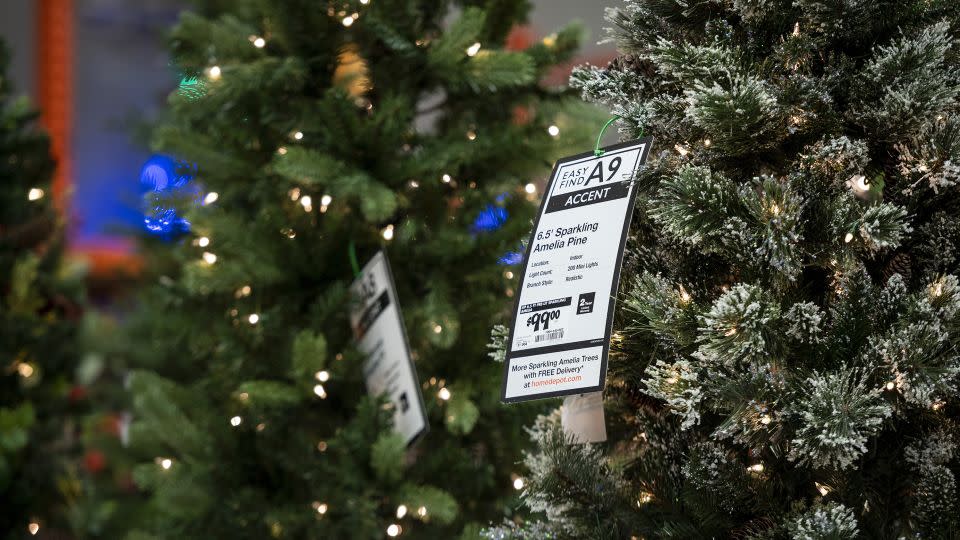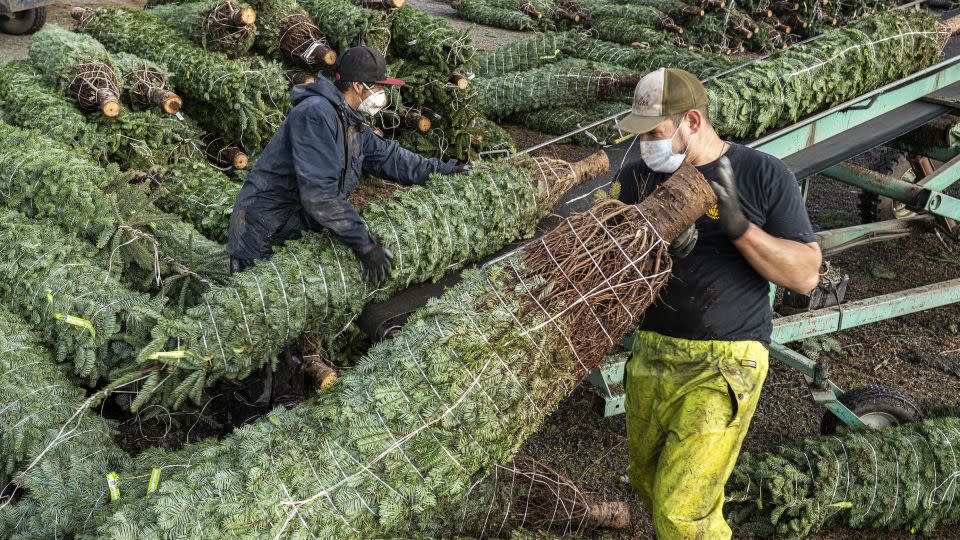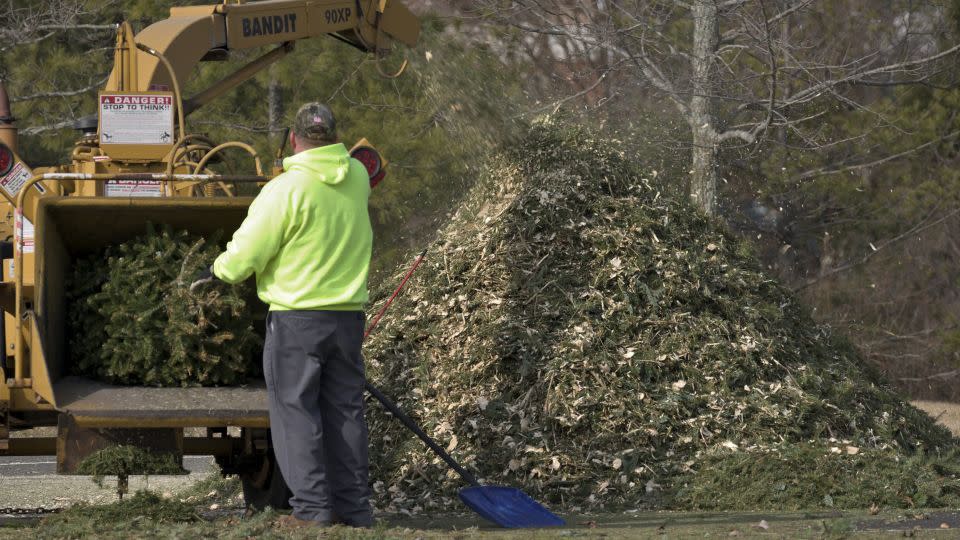It’s that time of year when people go out looking for the best holiday deals and bundled gifts. So what is the best type of tree to put them under?
While some enjoy the scent of a real tree and the joy of choosing one from a local farm, others prefer the simplicity of artificial trees that they can reuse for the upcoming Christmas.
But consumers are becoming increasingly climate conscious and considering which tree has the least impact on our rapidly warming planet has become a vital part of the holiday decision. Plus, choosing a planet-friendly tree will likely get you on Santa’s good list.
So which tree species has the lowest carbon footprint? a natural tree or a store-bought plastic tree? Experts say it’s complicated.
“It’s definitely a lot more nuanced and complex than you think,” Andy Finton, landscape conservation director and forest ecologist for the Massachusetts Nature Conservancy, told CNN.
We’ve compiled and double-checked a list of things you need to know before choosing between real and artificial.
The case for artificial trees

It’s easy to imagine that reusing an artificial tree year after year is a more sustainable option. But Finton says that if an artificial tree is used for six years (the average length of time people tend to keep them), “the carbon cost is definitely higher than a natural tree.”
“This balance changes if artificial trees are used for longer periods of time,” Finton told CNN. “And I read that it would take 20 years for the carbon balance to become equivalent.”
This is because artificial trees are usually made of polyvinyl chloride plastic, or PVC. Plastic is petroleum-based and produced in polluting petrochemical plants. Studies have also linked PVC plastic to cancer and other public health and environmental risks.
There is also the transportation part of the business. According to the U.S. Department of Commerce, most artificial Christmas trees are imported into the United States from China; This means the products are transported across the Pacific Ocean on fossil fuel-powered ships, then transported by heavy-duty trucks before landing on the distributor’s shelves. or on the consumer’s doorstep.
The American Christmas Tree Association, a nonprofit organization that represents artificial tree manufacturers, commissioned WAP Sustainability Consulting in 2018 for a study that found the environmental impact of an artificial tree was better than a real tree if you used the fake tree for at least five years.
“Artificial trees were looked at [in the study] Factors such as production and overseas transportation were taken into account when planting, fertilizing and watering real trees, with a field cultivation period of about 7-8 years,” Jami Warner, ACTA’s executive director, told CNN.
What are the benefits of real trees?


According to the National Christmas Tree Association, it takes an average of seven years for a Christmas tree to fully grow. As it grows, it absorbs carbon dioxide from the air. Protecting forests and planting trees could help stave off the worst effects of the climate crisis by removing planet-warming gas from the atmosphere.
If trees are cut down or burned, they can release the carbon they have stored back into the atmosphere. But the action of cutting down farm Christmas trees was offset when farmers planted more saplings in their immediate place, said Doug Hundley, spokesman for the National Christmas Tree Association, which advocates for real trees.
“When we harvest or cut down trees, we replant them very quickly,” Hundley said.
If the idea of hiking through a forest to find the perfect tree appeals, you can purchase a permit from the U.S. Forest Service, which encourages people to cut down their own trees instead of purchasing an artificial one. Cutting down thin trees in dense areas can improve forest health, according to Recreation.gov.
But Finton isn’t suggesting chopping down a giant tree to lure Clark Griswold home; especially if it’s in a prohibited area. Instead, he recommends buying trees from a local farm.
“To me, the benefit of going to a Christmas tree farm, which is different from cutting down a tree in the forest, is that it concentrates the impact of removing the trees in one place,” he said. “And that puts the onus on farmers to regenerate the trees.”
There is also an economic benefit to going wild, as most of the trees people obtain are grown on nearby farms. According to the National Christmas Tree Association, nearly 15,000 farms in the U.S. alone grow Christmas trees, providing full- or part-time employment for more than 100,000 people in the industry.
“What we’re doing by purchasing a natural Christmas tree is supporting local economies, local communities, local farmers, and to me that’s an important part of the conservation equation,” Finton said. “When a tree grower can derive economic benefit from his land, he is less likely to sell it for development and convert it to other uses.”
Disposal is important


After the holidays are over, trees pile up on sidewalks, and in many places their final destination is landfills, where they contribute to emissions of methane, a greenhouse gas nearly 80 times more powerful than carbon dioxide.
“Disposing of real Christmas trees in landfills is highly discouraged,” Hundley said, adding that there should be “separate areas for yard waste where Christmas trees can go.”
But some towns and cities are reusing trees in ways that benefit the climate and the environment. In New York City, trees left on sidewalks for a period of time are collected to be recycled or composted. The city sanitation department also hosts an initiative called MulchFest; Here, residents can use their trees to chip them for mulch and feed other trees in the city.
“Once the tree is finished being used by the homeowner, turning the tree into mulch is a very easy and common process in America, and the stored carbon is put back into the soil,” Hundley added.
Finton also says old Christmas trees can be reused for habitat restoration; If placed along streams and rivers they can help control erosion, and if placed in rivers and lakes they can even help develop underwater habitats.
The end of the life of an artificial tree is much different. They are thrown into landfills (which can take hundreds of years to decompose) or in incinerators where hazardous chemicals are released.
Underline


Given the complex climate pros and cons, real Christmas trees have the upper hand. But if you choose to artificially floor your living rooms, get a tree that you will love and reuse for years to come.
Either way, people should be happy with their decisions and find other ways to deal with the climate crisis, Finton said.
“It’s a debate, but once you make a decision you should feel good about your decision, because there are so many things we can do in our lives that have a bigger impact on the climate; like driving less or advocating for policies that expand renewable energy,” Finton said. “Reducing the effects of climate change “Enjoy the holidays and focus on other aspects of your life.”
A version of this story was first published in November 2021.
For more CNN news and newsletters, create an account at CNN.com